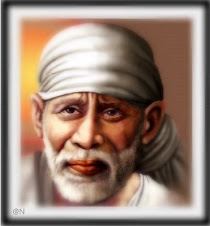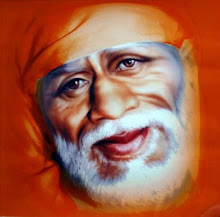
The Saibaba temple is situated in the heart of Shirdi village spreading in approximately 200sqmts, attracting thousands of pilgrims from across the world. The temple premises has several of important sites connected to Saibaba of Shirdi that are venerated by all the devotees. Here we are discussing the important sites inside the complex of Shirdi Saibaba temple.
Khandoba temple holds a special place in Shirdi, since this was the site which saw the coming of Saibaba in his tender years dressed in kafni. It is believed that when this young man, with flowing beards and sparkling eyes, approached the temple premises as one of the guest of a wedding party, the temple priest Mhalsapati greeted him as 'Ya Sai'. This name led to the appellation and evolution of one of the most admired spiritual gurus of
Earlier the temple lay on the periphery of the village and Khandoba was the tutelary deity of the Mhalsapati family. Peaceful and secluded ambience of the temple impressed Saibaba. At the entrance to the temple is a large banyan tree which is mentioned in the 'Shri Sai Satcharitra' as the place where the bullock cart halted. It is now commemorated with a small shrine and 'padukas' or footwear of Saibaba lay at its base.
Gurusthan
Gurusthan means the place of the Guru. It is significant because here Saibaba spent most of his time here, when he first came to Shirdi. It is also the same place where, according to Saibaba, the tomb of his own guru was located by the Neem tree. The neem tree is still extant in the Gurusthan and there is also a pair of marble padukas on a pedestal, a 'Shivalinga' and a statue of Baba. A small dhuni on a stand is kept in front of the shrine, which is lit on Thursday and Friday. Gurusthan is a wonderful place sit and meditate in peace that generates an inner peace leading to unison with Sai Baba.
Samadhi Mandir
Samadhi Mandir houses Saibaba's tomb and was originally constructed as a wada (large private house) during Saibaba's last years. The Samadhi Mandir has the statue of Saibaba all in white marble sitting in relaxed, natural and majestic demeanor gazing at the millions of devotees who throng the temple for his blessings.
The daily routine of the temple resumes at 5 in the morning with Bhoopali, a morning song, and closes at 10 in the night after the Shej aarati is sung. Only on three occasions the temple is kept open overnight i.e. on Gurupurnima, Dassera, and Ramnavmi. Every Thursday and on each festival, a Palakhi with Baba's photo is taken out from the temple.
Dwarkamai
Dwarkamai in one of the cherished treasure troves of Shirdi associated with Saibaba. When Shri Sai Baba came to Shridhi with a marriage procession, he stayed at Dwarkamai and remained there till the very end of his life. It is situated on the right of the entrance of Samadhi Mandir. Here Saibaba used to heal the sufferers and the sick.
Dwarkamai used to be an old mosque in a very bad shape. Saibaba restored its sanctity turning it into Dwarkamai. It has a portrait of Saibaba and a big stone where he used to sit. Dwarkamai has the Kolamba, water pot and the grinding stone associated with Saibaba. It also has a chariot and a palkhi.
Chavadi
Chavadi literally means village office. In Shirdi Sai temple Chavadi is located on the right side of Dwarkamai. Saibaba used to alternatively sleep in Chavadi, during the last decades of his life. Chavadi is open to devotees from
Lendi is an important place where Saibaba used to spend his time everyday. It has some tombs, a shrine and a perpetually burning lamp lit by Saibaba and placed between the two trees he planted.



















